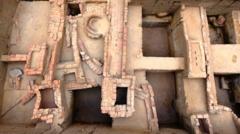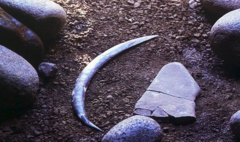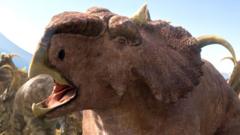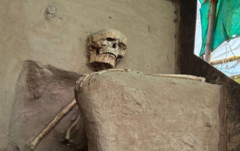A significant archaeological discovery beneath a soccer field in Vienna's Simmering district has unveiled a mass grave containing 129 individuals from the Roman Empire era. Dating between A.D. 80 and 234, the remains provide insight into a catastrophic military event involving Roman forces and Germanic tribes.
Unearthing History: Roman Mass Grave Discovered Beneath Vienna Soccer Field

Unearthing History: Roman Mass Grave Discovered Beneath Vienna Soccer Field
Archaeologists uncover a mass grave dating back to the Roman Empire, revealing the remains of 129 individuals, highlighting a tumultuous period of conflict.
Recent excavations in Vienna, specifically in the Simmering district, have led to a remarkable historical find – a mass grave containing the remains of at least 129 individuals. Uncovered beneath a soccer field during renovation work, this mass burial site provides poignant evidence of a time when the Roman Empire was in conflict with Germanic tribes nearly two millennia ago.
The excavation team from the Vienna Museum, collaborating with a local construction firm, announced the discovery, believed to be linked to a catastrophic military defeat. Initial radiocarbon dating estimated the remains to be from approximately A.D. 80 to 234, a timeframe characterized by significant Roman leadership under emperors like Domitian and Trajan during their clashes with Germanic tribes in the region. Artifacts discovered with the remains, such as an iron dagger, lance points, and fragments of scale armor and helmet cheek pieces, further reinforced this historical context.
Michaela Binder, the lead anthropologist on the excavation, noted the unprecedented nature of this discovery. Unlike many Romano-Germanic burial sites that predominantly show evidence of cremation, the presence of unburned human remains presents a unique opportunity to study the life histories of individuals from the first century A.D. "For all of middle Europe from the first century, we don’t have any unburned, uncremated human remains," Binder stated, emphasizing the historical significance of the find.
The unearthing of these skeletal remains under a soccer field not only adds to our understanding of ancient military conflicts but also sheds light on the social dynamics of the Roman Empire during a turbulent era. This landmark inquiry into the past has opened avenues for further research into the lives of those buried and the events that led to their untimely demise. As efforts continue to analyze the site and its artifacts, the historical narrative surrounding the Roman Empire and its interactions with neighboring tribes will undoubtedly expand.



















